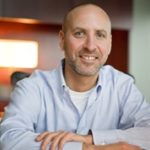A former doctor at Walter Reed Army Medical Center has been accused a falsifying a study which extols the virtues of Infuse, a bone graph product manufactured by Medtronic. At the time the study was published, Dr. Timothy R. Kuklo was a paid consultant for Medtronic.
After conducting an investigation, the Army claims that Dr. Kuklo’s study makes false claims and overstates the benefits of Infuse that was used to treat soldiers severely injured in Iraq. Specifically, the Army claims to have no record of a large number patients reported to be part of the census used to support the study findings. The Army also alleges that the success rate for bone healing reported by Dr. Kuklo was inconsistent with that reported by other Army doctors using Infuse under the same or similar circumstances. Finally, the Army claims that Dr. Kuklo forged the signatures of four doctors falsely indicating they are co-authors of the study and that Dr. Kuklo published the study without its permission.
One of the four supposed co-authors, Lt. Col. Romney C. Andersen, brought the bogus study to the attention of the Army. The British medical journal that published the study retracted it this March at the Army’s request. The Army has provided the results of its investigation to Medtronics chief executive and to Dr. Kuklo’s current employer, Washington University School of Medicine in St. Louis.
Not surprisingly, Medtronics denies any wrongdoing and the university will not confirm that it is investigating Dr. Kuklo. But Dr. Kuklo is still on the faculty and he is keeping a low profile by refusing to participate in the Army’s investigation or to respond to any inquiries concerning the study. This is one more example of big business and big medicine blurring the lines between maximizing profits and independent research. Where does it end and who is watching out for the patient?

Bret Hanna of Wrona DuBois in Utah, focuses exclusively on litigating plaintiffs’ medical malpractice and catastrophic personal injury cases. He has represented clients in state and federal courts, in mediations, and in administrative proceedings in Michigan and Utah since 1991.











Comments for this article are closed.